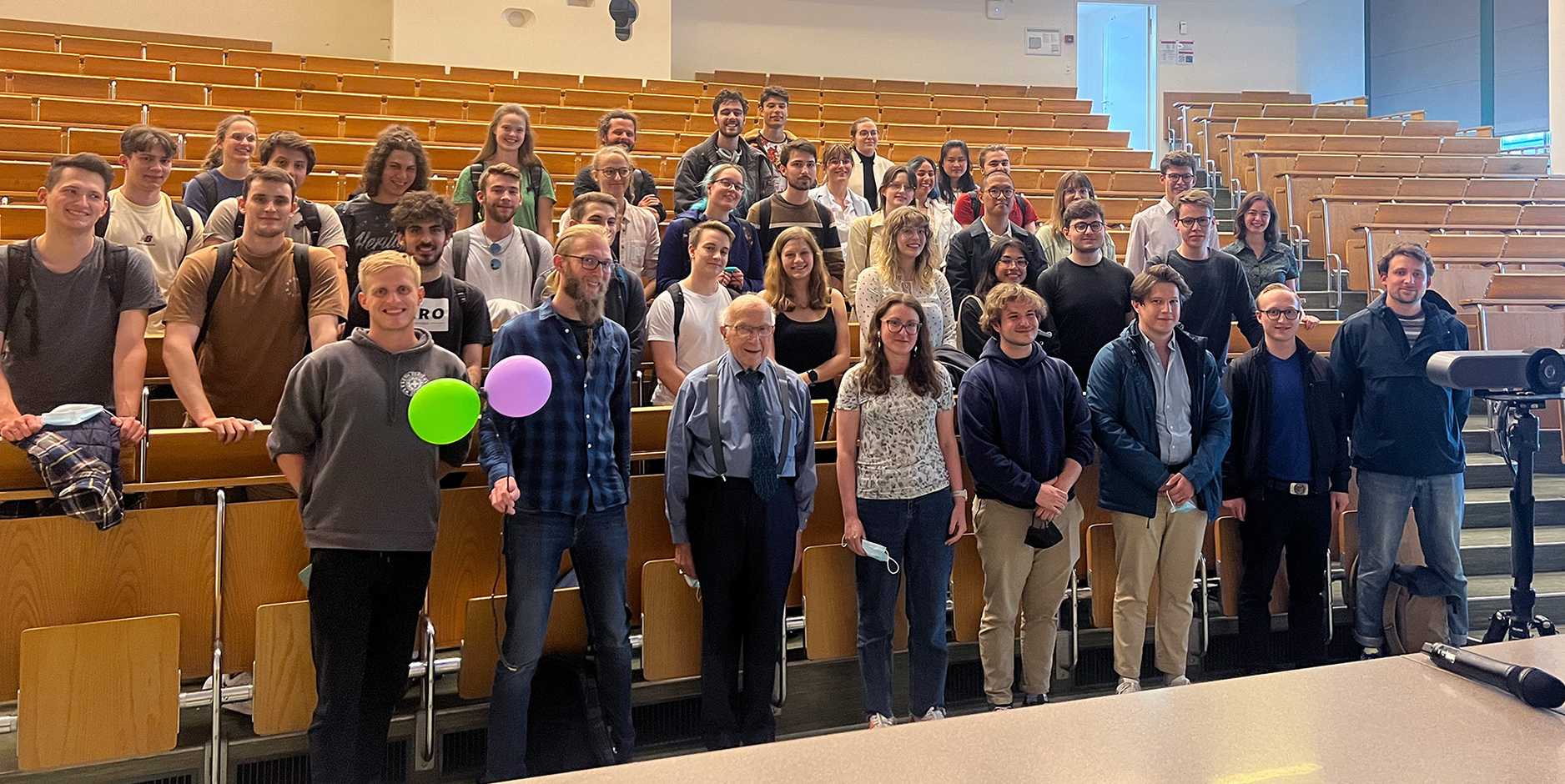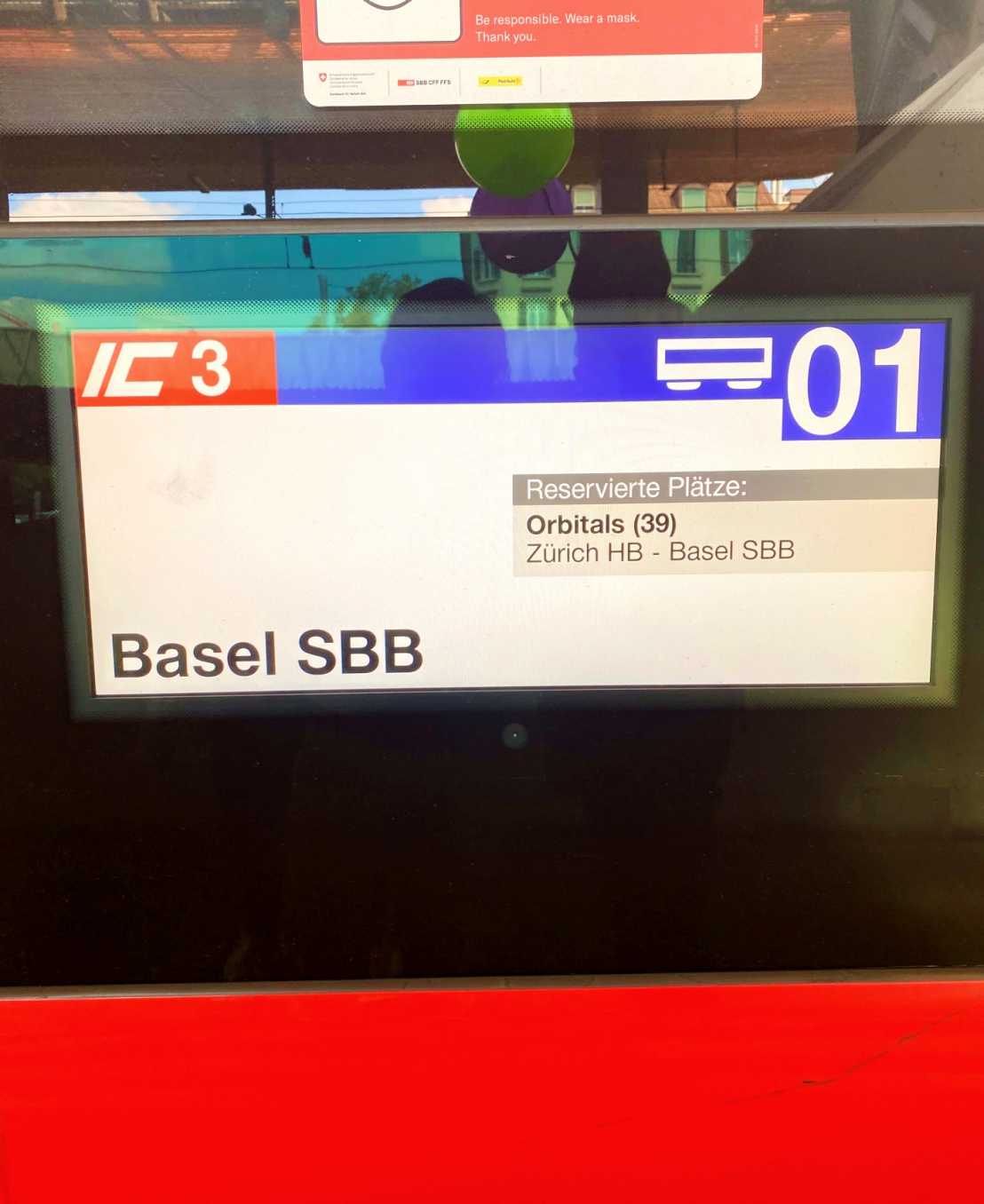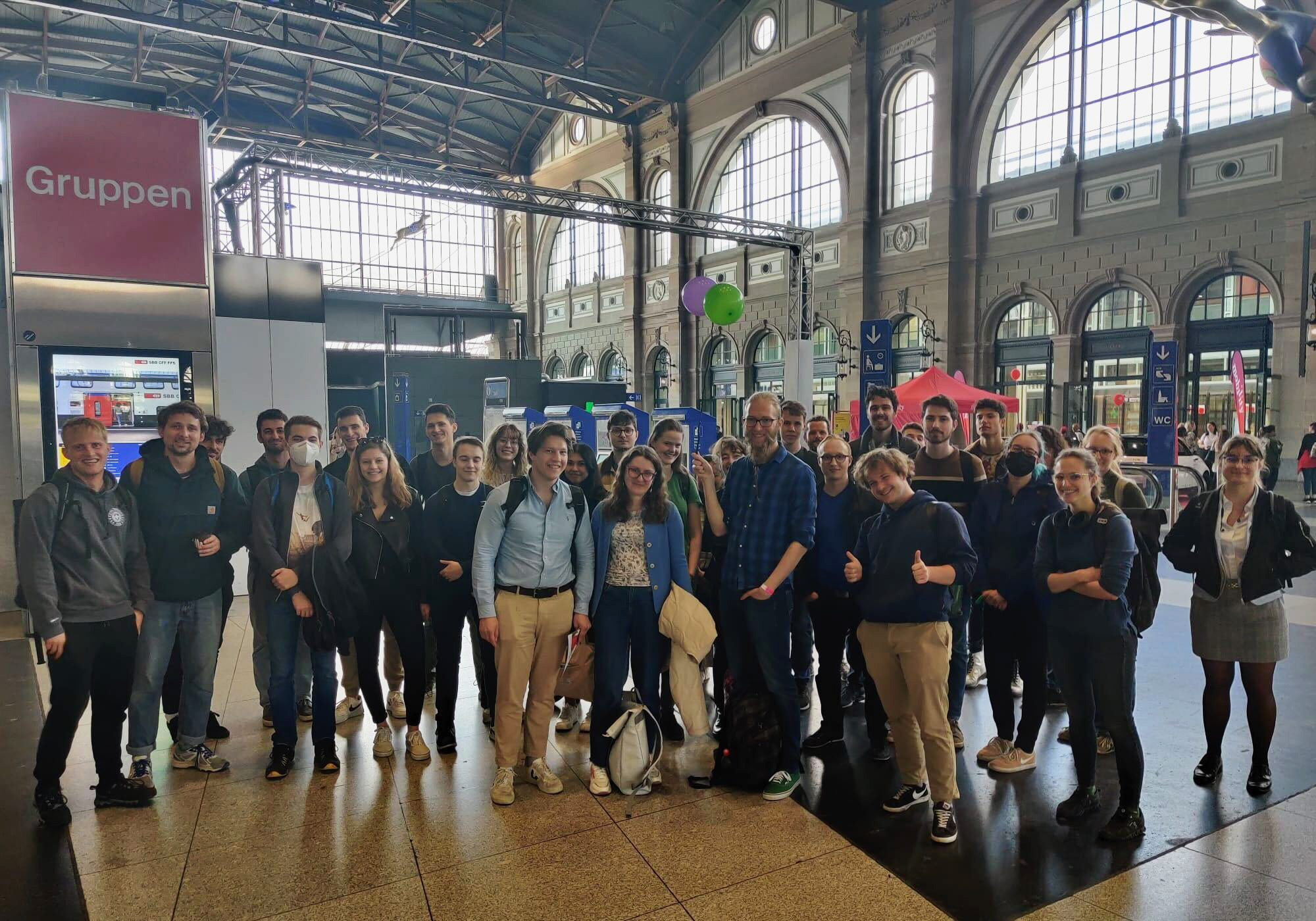How an “orbital” SBB train brought ETH students to Roald Hoffmann
Together with 36 students, the team of the 6th semester OC IV course – taught by Professor Chen and Dr. Tsybizova – recently traveled to Basel to attend the lecture of Nobel Laureate Professor Roald Hoffman, whose work is a central component of the course. The trip was a unique opportunity for the students to get to know him. It was supported by the Camile and Henry Dreyfus Foundation, the organizers of the Roald Hoffmann’s Dreyfus Lectureship. Learn more in this student report.

By the end of their second year, ETH Zurich’s Bachelor students have already battled through canonical organic chemistry. The curriculum of their third year contains novel technical material, now serving largely as the backbone for the discussion of the art of building and using models. The course “OC IV: Physical Organic Chemistry” teaches foundations of this field primarily through the lens of pericyclic reactions. The leitmotif here is Roald Hoffmann’s and Robert B. Woodward’s work on the conservation of orbital symmetry. Through multiple case studies, which merge theoretical and experimental chemistry, OC IV brings out the elements of the philosophy of science as necessary and natural side products of chemical practice. Beyond this, seeking threads that bind chemistry with other fields of human interest is what “the Hoffmann method” shares with OC IV.
It has, therefore, appeared only natural to our teaching team to organize a trip to Basel after we had found out that the Camile and Dreyfus Foundation will support two lectures of Hoffmann at the University of Basel. The first addressed the relationship of art and chemistry, while the other looked into different criteria for the definition of a chemical bond. We decided for the second lecture, since the ever-recurring topic of the chemical bond is directly pertaining to the contents of our lecture (OC IV). We were expecting perhaps a dozen of OC IV devotees. A staggering 36 students registered for the trip.

On the afternoon of May 9, 2022, we met at Zurich Main Station and boarded the SBB’s IC 3 train to Basel, whose wagon was reserved for us and was appropriately labelled “Orbitals”. We encountered a full house in Basel, including familiar faces from other groups of ETH Zurich. Hoffmann started his talk by announcing a holistic lecture on bonding. He began with the historical account of the representations of the chemical bond, using, e.g., Kekule’s “Wurstformel” to point out that, while comical from today’s theoretical perspective, these representations nevertheless contain a reasonable degree of chemical information.
Hoffmann split the remainder of his talk into two big units, presenting in one unit all the different methods used to probe the existence of the bond experimentally, and in the other one those to probe it theoretically. In the abundance of methods that he presented – ca. 15 of different experimental and theoretical methods addressing the same problem – the common grounds emerged: Different approaches provide insights of different nature. They are the tools to be played with, and they get broken from time to time. Often, however, these approaches are proclaimed to be the ultimate answers by their creators-which they rarely are-creating an atmosphere of scientific sensationalism.
This does not mean that the conviction in one’s own models is not important. In his essay “Beneath the surface of the chemical article”, Hoffmann writes: “I would argue that both senses are essential to science: dispassionate logical reasoning and impassioned conviction that one (model, theory, measurement) is right and another is wrong. I feel that scientific creativity is rooted in the inner tension, within one and the same person, of knowing that he or she is right and knowing that conviction has to be proven to others’ satisfaction. By a journal article.” To us, this resonates with the danger of publication self-aggrandizement – something that Professor Antonio Togni would call “orchestrating relevance”.

The lecture ended two and a half hours later, so we made our way to the great researcher to ask for a photo with the students (see header photo above the article). A better epilogue unraveled. Following his inquiry about such a large group of students, Hoffmann autocatalytically dived into describing his view of the origin of the Woodward-Hoffmann rules – in essence, granting the students an opportunity for an unmediated historical account; a private, intimate lecture of a sort, on how R.B. Woodward approached him by suggesting calculations for the ring-closing electrocyclization of 1,3-butadiene. Hoffmann recounted that no one was particularly interested in his calculations but rather in Woodward’s qualitative predictions. He closed by explaining how this collaboration resulted in his realization of the power of a more qualitative approach to science, despite him being a theoretician. This helped him develop “from a calculator to an explainer”.
We sincerely thank Camille and Henry Dreyfus foundation for their financial support.